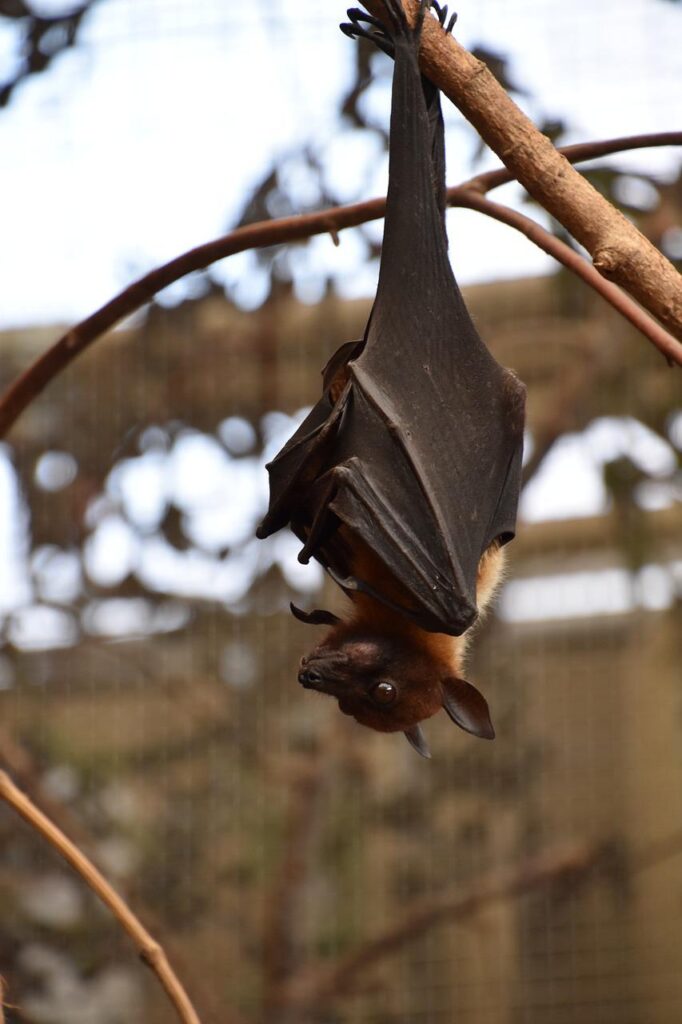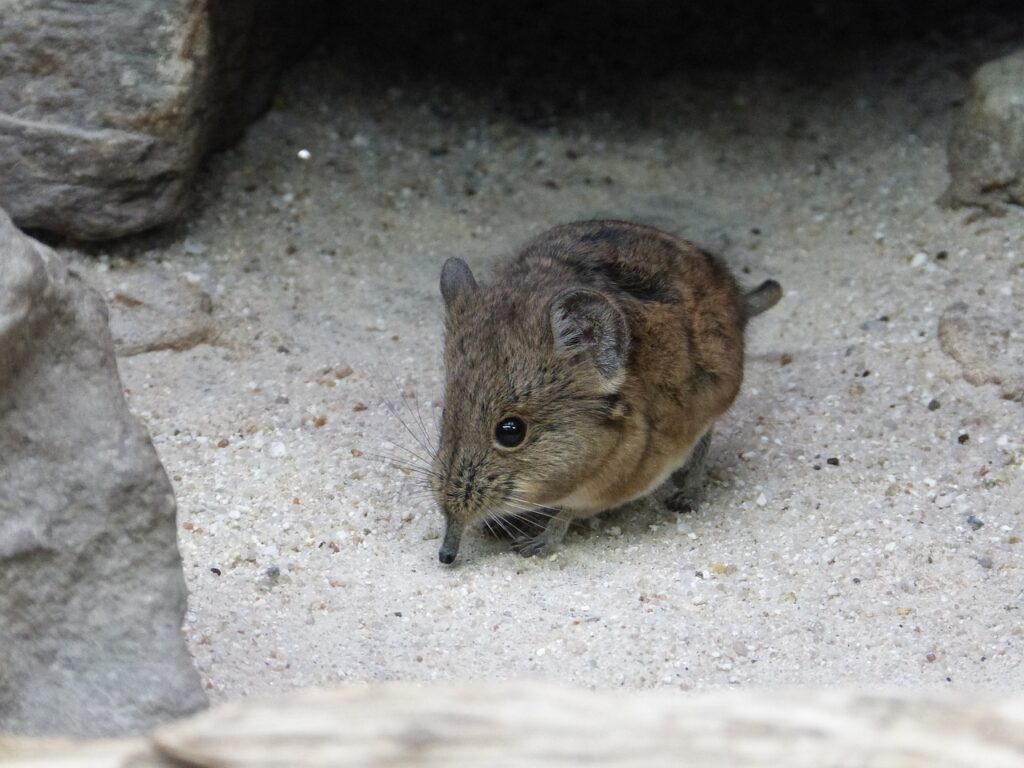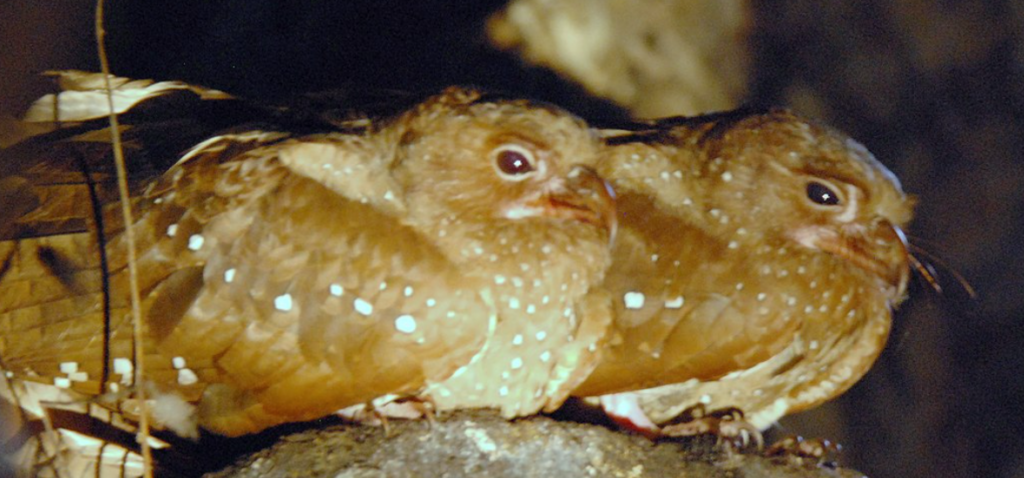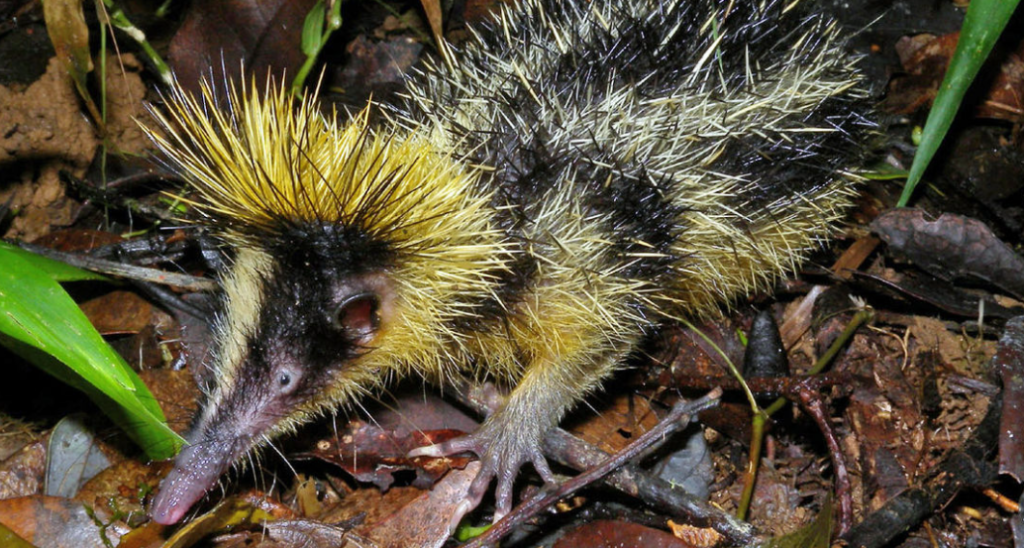Echolocation is the ability to locate objects based on sound. It’s a type of sonar that animals use, but it’s not limited to just aquatic mammals-many land-dwelling creatures also have this ability. This list of 10 animals with echolocation will teach you about these amazing creatures and how they use this special sense for survival!
#1 Bats

Bats use echolocation to navigate and find food.
To find their way around in the dark, bats use high-pitched sounds (ultrasound) to bounce off objects and gauge their distance from those objects. The echoes from these sounds allow bats to see where they’re flying about obstacles like trees or walls. Some species of bats have been known to use this same technique under bright conditions-like when flying at dusk-to avoid crashing into things as they hunt for prey or mates.
#2 Dolphins

Dolphins use echolocation to navigate, find food and communicate with each other. They have a very complex system for producing sound waves that bounce off objects in the environment and then return to the dolphin’s head. Dolphins can use this information to locate objects as small as a grain of sand or as large as another animal (such as their prey).
Dolphin heads are made up of fatty tissue that sound waves travel through easily. The sound waves bounce off of objects and come back to the dolphin’s head, where they are picked up by a special tissue called the melon. The melon is an organ that produces and focuses sounds in the dolphin’s head, somewhat similar to how a parabolic microphone functions in humans. Once the melon receives the returning echolocation “ping,” it sends information about the object (such as its size, shape, and distance) to areas of the dolphin brain involved with sight and hearing.
#3 Porpoises

Porpoises use echolocation for hunting and navigating in the dark. In addition to their large brains, they have a nasal passage used to make the sounds. Porpoises have a distinct click sound, with some species producing more than one click per second. They use this sound to locate prey and avoid obstacles in the water.
#4 Elephant shrews

Elephants are a familiar sight in Africa, and you may have seen many whiles on safari. But you probably didn’t know that elephants have large ears, which they use to hear sounds that other animals cannot hear.
Elephant shrews are native to Africa and are the only known mammals that do use echolocation. They have a long snout and long tail and are about the size of a mouse! Instead of using their noses or mouths to make sound waves bounce off objects around them, they rely on their large external ears (up to 30 cm long) to hear approaching predators or prey.
#5 Owls

Owls are the nocturnal birds of prey that you probably know best. They have large, forward-facing ear openings, which help them to locate their prey in dim light.
Unlike most birds with echolocation, owls have a huge advantage over other animals in finding prey. These silent hunters can see clearly in low light conditions because their eyes have a reflective layer called the tapetum lucidum (Latin for “bright carpet”). This layer allows more light to pass through the retina at night and reflects it into your eye so you can see what you’re aiming at!
#6 Bees

Bees are one of the fascinating examples of echolocation, as they possess sonar (short for “sound navigation and ranging”). This type of echolocation involves using sound waves to navigate the world. The frequency at which bees generate their high-pitched buzz is too low for humans to hear-but. It’s perfect for flying insects. We owe our very existence on this planet to these little creatures: Bees pollinate an enormous range of plants and flowers that would otherwise go unstimulated by wind or raindrops alone!
Bee echolocation works similarly to how bats use sonar: A bee emits a series of pulses through its wings; if it senses no echoes or reflections off objects ahead in its path, it knows that nothing stands between it and its goal-and, so it goes forth confidently toward its destination!
There are three groups within the bee family tree with differing degrees of sonar abilities: Megachilidae (sweat bees) cannot use sound waves as mediums for navigation; Apidae (honeybees) can only detect objects within about 6 meters away from themselves through their sonar system; Anthophoridae (leafcutter bees) can pinpoint objects more than twice as far away from themselves via vibrations created by their buzzing wings!
#7 cave-dwelling insects
This list of cave-dwelling insects lives in caves or other underground habitats. The majority of these insects are blind, and many are carnivorous. Some are parasites, predators, and scavengers, while others are herbivores. These insects utilize caves as habitats to avoid predators, temperature extremes, and drought.
Usually, these caves are often dark and humid. Insects that live in these conditions usually have large compound eyes with many facets to increase their field of vision. In other cases, some species have lost their eyesight altogether. Some cave-dwelling insects are also blind due to genetic mutations.
The ability to use sound waves for navigation is an important distinction between these three types of bees. ilidae are disadvantaged when finding food or mates, relying on smell or touch instead of sonar. Apidae can only detect objects within a relatively short range, so they may miss potential sources of nectar or pollen unless they fly close by them. Anthophoridae, on the other hand, can find flowers and other resources from much further away, thanks to their keen sense of hearing. This example illustrates how different bee species have adapted to specialized niches to survive and thrive.
#8 Tenrecs (a type of mammal found in Madagascar)

Tenrecs are insectivores and native to Madagascar. They’re omnivorous, nocturnal mammals that live in rainforests.
Tenrecs can be found in the forests of Madagascar, where they live on various foods, including plants and insects. They also eat eggs or small vertebrates that they find using their echolocation to detect prey.
The tenrec has a long snout with a nose pad at the end so it can use its sense of smell to locate food sources and dig for them using its paws or snout if necessary. The hind legs are short but powerful, allowing them to dig quickly through hard soil when hunting for grubs or ants underneath surface rocks or logs where they may be nesting.
#9 Shrews and moles

Moles and shrews are the only mammals known to use echolocation, but they do so differently than bats. They have very small heads and ears (smaller than most bats), but their brain is still large for their body size. This means that their brains can perform more complex calculations with less hardware!
Shrews and moles are small mammals that use echolocation, or “biosonar” to identify their prey. The sound waves emitted from these animals’ mouths bounce off of nearby objects and return as echoes, which the animal’s brain can interpret to help determine what type of prey is present in its surroundings.
Even though these animals don’t fly, the same principles of echolocation apply to their hunting techniques. They emit high-pitched sounds through their noses that bounce off objects in front of them. This allows them to detect where insects are hiding and how far away they are.
The use of echolocation by shrews and moles is an interesting example of how different animals can evolve similar adaptations to solve similar problems. In this case, both groups of animals needed a way to find hidden prey, so they evolved a solution that works perfectly for each species.
#10 Oilbirds (a type of bird found in northern South America)

Oilbirds are nocturnal birds that live in hollow trees, primarily in the rainforests of northern South America. Unlike most birds, unable to see well at night and rely on their sense of hearing to navigate, oilbirds have a unique way of using sound waves to navigate their environment. This allows them to fly at night and avoid predators by listening for them with echolocation.
Oilbirds are also the only birds able to fly backward; they use their wings like paddles when taking off from tree trunks or branches. They can also fly upside down!
Most mammals have echolocation.
Most mammals have echolocation. While it’s true that some marine mammals like dolphins and beluga whales can use sound to communicate, most land animals use it for navigation and hunting. Echolocation has been observed in bats, shrews, and rodents but also in many other species of mammals such as deer, dogs, cats, and even elephants!
Conclusion
So, there you have it. Ten different animals use echolocation as a primary means of navigation and hunting. It’s amazing how many different creatures can make these echolocation sounds and how many ways they do it. We hope this list helped you learn about the animal kingdom!

